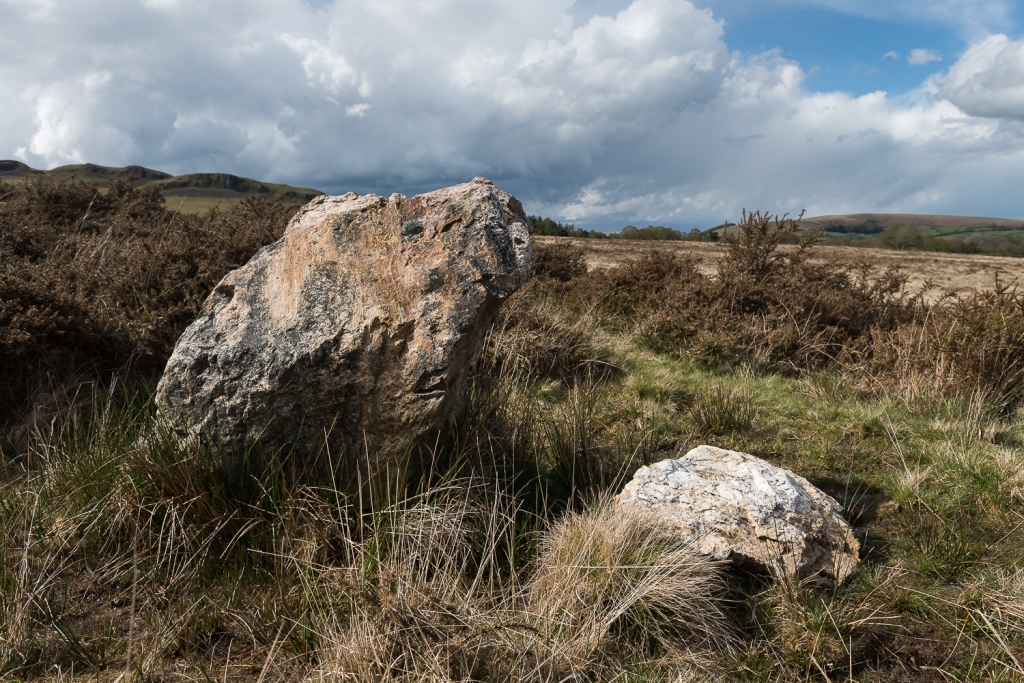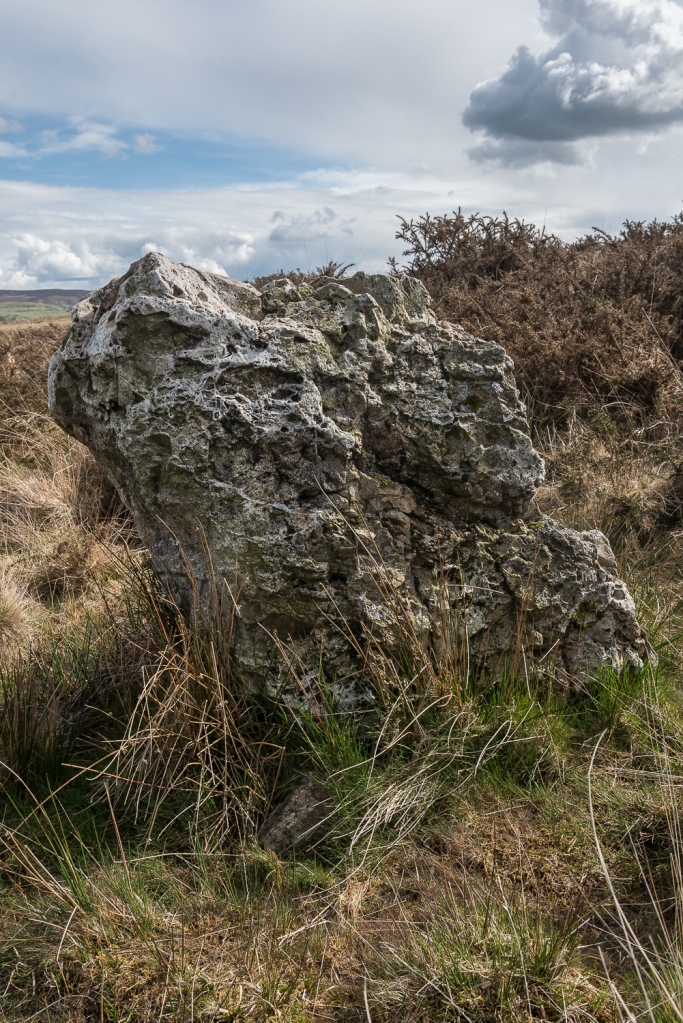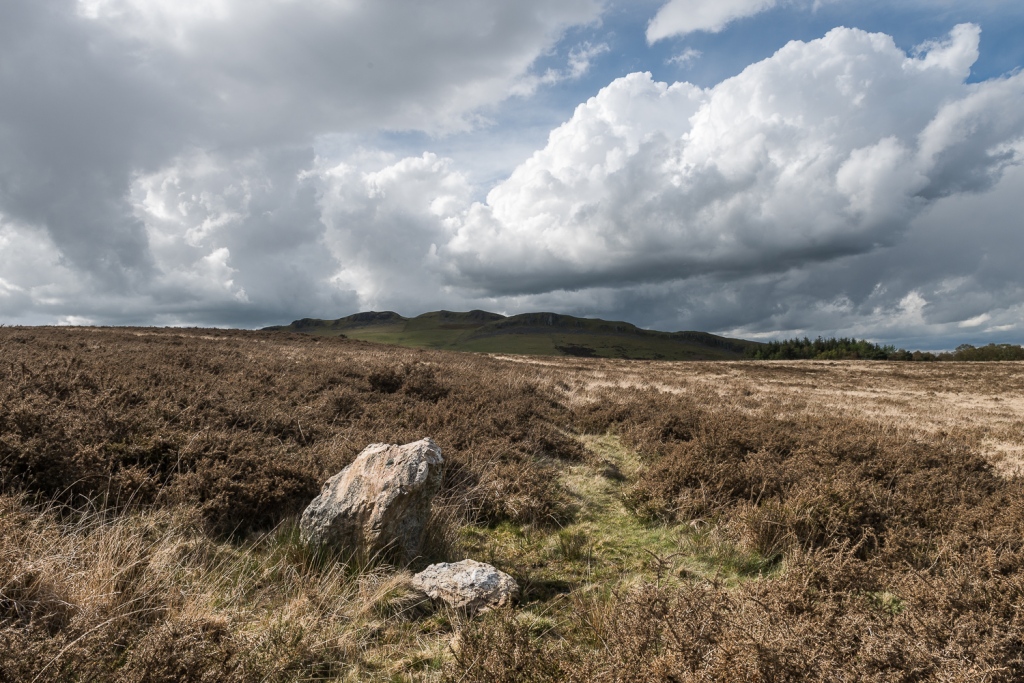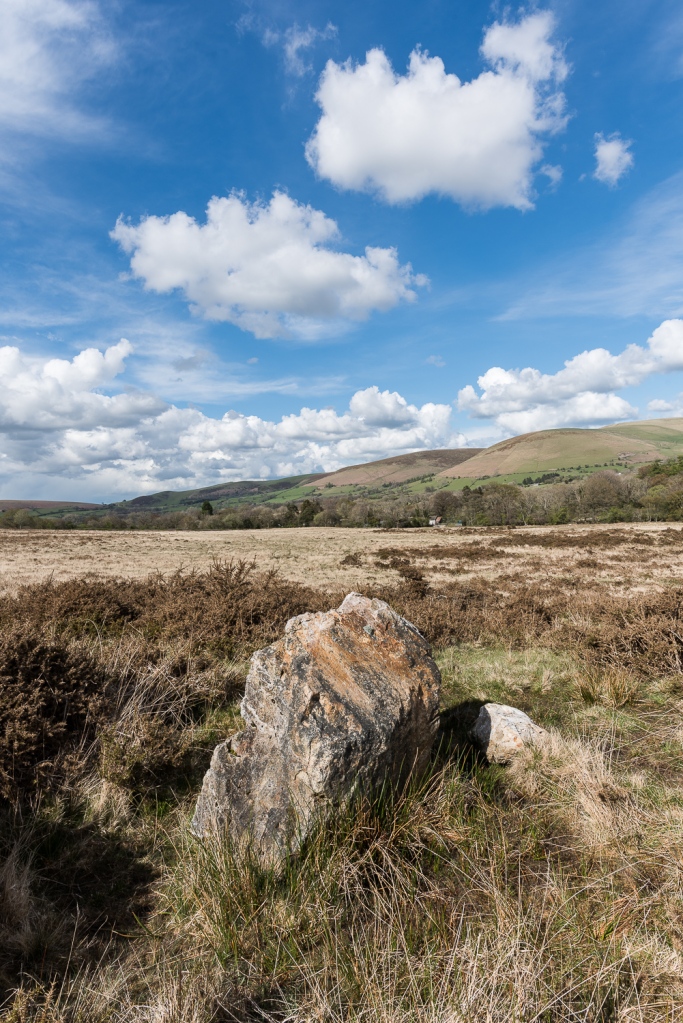I suspect this stone is deeply hidden among the furze for much of the year – certainly others seem to have had a hard time finding it. It is marked as a recumbent stone, with what is probably the broken top section lying beside it, though I think it would look upright if the broken piece were ever to be replaced. The eastern face is relatively smooth and richly stained with orange iron deposits, while the west-facing side is deeply pitted by the weather. Standing where it does, on relatively low-lying marshy ground, I imagine this stone as having once stood in a clearing among the birch and alder trees that covered much of Britain in prehistoric times – a sacred grove, perhaps. It’s actually named for the roadside cottage nearby, originally an inn called The Drover’s Arms.




